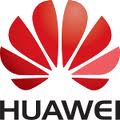 Huawei, a leading global information and communications technology (ICT) provider , today announced the formal inclusion of ”IDEALUse Cases” to its best-in-class CEM (Customer Experience Management) solution branded, HUAWEI SmartCare. Huawei’s IDEAL (Inter-Departmental Experience Associated Life-Cycle) Use Cases form a library of modular functions integral to its SmartCare portfolio. As part of the CEM portfolio developed by Huawei Technologies, example cases are used to assist operators in improving the customer experience throughout different stages in the subscriber’s life-cycle, while making links to the different departments in the organization. In each stage of the subscriber lifecycle, actionable objectives are backed by quantifiable CE metrics. The uniqueness of Huawei’s SmartCare IDEAL Use Cases lies in the Inter-Departmental significance, as the name implies. This bridges any so-called “silo-gaps” within the operator’s organization, while providing a balanced approach towards meeting a common mission goal. Efficiency is greatly improved since information is distributed simultaneously across different departments.
Huawei, a leading global information and communications technology (ICT) provider , today announced the formal inclusion of ”IDEALUse Cases” to its best-in-class CEM (Customer Experience Management) solution branded, HUAWEI SmartCare. Huawei’s IDEAL (Inter-Departmental Experience Associated Life-Cycle) Use Cases form a library of modular functions integral to its SmartCare portfolio. As part of the CEM portfolio developed by Huawei Technologies, example cases are used to assist operators in improving the customer experience throughout different stages in the subscriber’s life-cycle, while making links to the different departments in the organization. In each stage of the subscriber lifecycle, actionable objectives are backed by quantifiable CE metrics. The uniqueness of Huawei’s SmartCare IDEAL Use Cases lies in the Inter-Departmental significance, as the name implies. This bridges any so-called “silo-gaps” within the operator’s organization, while providing a balanced approach towards meeting a common mission goal. Efficiency is greatly improved since information is distributed simultaneously across different departments.
In many cases, the different silos must work together to overcome both technical and commercial obstacles in order to ensure a superior end user experience. Huawei’s professional service team (comprised of data scientists, technology & marketing experts) will take a scenario, and model it analytically using all available network inputs, as well as various unstructured data sources available from different departments. Once the model is created, automation takes over in the collection and processing stage by a centralized analytics engine. CEI’s are derived and analyzed with alerts raised if needed and the output is then sent to the appropriate stakeholder silos to take appropriate action. As part of the institutionalization process, our professional teams will also make suggestions on work-flow changes that are conducive to facilitating and expediting the decision-making process.
For example, in the USE stage of the lifecycle, the customer may encounter jagged video streaming. This may be due to restrictions imposed on the subscribed QoS, or a result of network congestion. Using the modular function modeled earlier, multiple departments, such as, network, customer care, and marketing will be notified of any deterioration in service quality, with the failure cause automatically identified. A list of remedial actions will also be suggested according a set of customizable pre-defined rules. This may include a service ticket being opened automatically, and/or an alert to the customer care staff for follow-up, and/or an electronic invitation to upgrade service package. All actions will be recorded for future analysis by individual stakeholders. What began as an issue stemming from the USE stage of the lifecycle quickly spawns new insights into other stages of the lifecycle, such as, BECOME AWARE, SELECT & BUY, and GET HELP. Throughout the process, the relevant stakeholder silos are kept informed of the latest development in user experience assurance. It is this inter-departmental participation, involving multiple stages of the End-User Lifecycle, that Huawei’s SmartCare solution outperforms its competitors in CEM.
The full suite of use cases form an interlocking framework that makes each silo within the operator’s organization a stakeholder, resulting in an automated, seamless, and unified operational structure within the organization in the pursuit of CE management and assurance.
Superior end user experience will soon become the only differentiation factor for telecom operators in today’s competitive market. HUAWEI SmartCare delivers unrivalled CEM capability through its holistic development philosophy.




